So, frogs? They’re everywhere. The Malagasy frogs are particularly vocal, and being near a stream in the middle of the night is a little bit like listening to a chorus of drills. The sheer volume is impressive. But the frogs themselves are fascinating. Of course, there are several unique genera, and they are all beautiful.
The following photos were taken of frogs that were not quite compatable with descriptions of the species they somewhat matched up to, and hence had photos taken. They demonstrate the scientific process we went through on each frog captured.
Boophis spp. aff. taephromystax
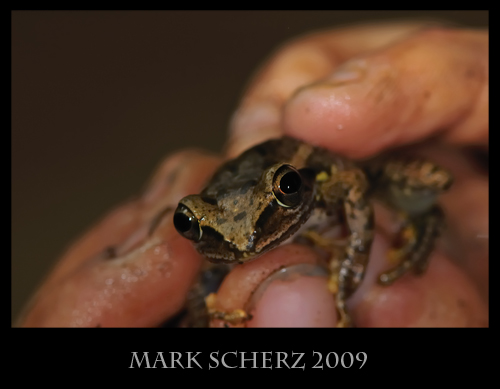
D300 + 105mm VR + R1 Flash Unit @ 1/60s f/8

D300 + 105mm VR + R1 Flash Unit @ 1/60s f/8
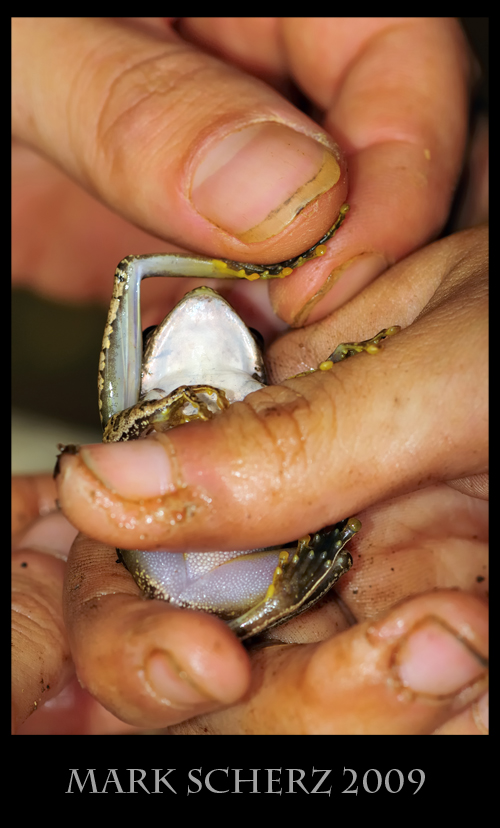
D300 + 105mm VR + R1 Flash Unit @ 1/60s f/8
Just so you know, the activity shown above is called Tibiotarsal Articulation. It doesn’t hurt or injure the frogs in any way, and gives a very good indicator of the leg length and therefore can be a species indicator. One of the main reasons this is not necessarily B. taephromystax is that this articulation reaches beyond the nose significanlty, and according to Glaw and Vences it should reach between the eye and tip of snout.
Mantidactylus spp. aff. femoralis

D300 + 105mm VR + R1 Flash Unit @ 1/60s f/8
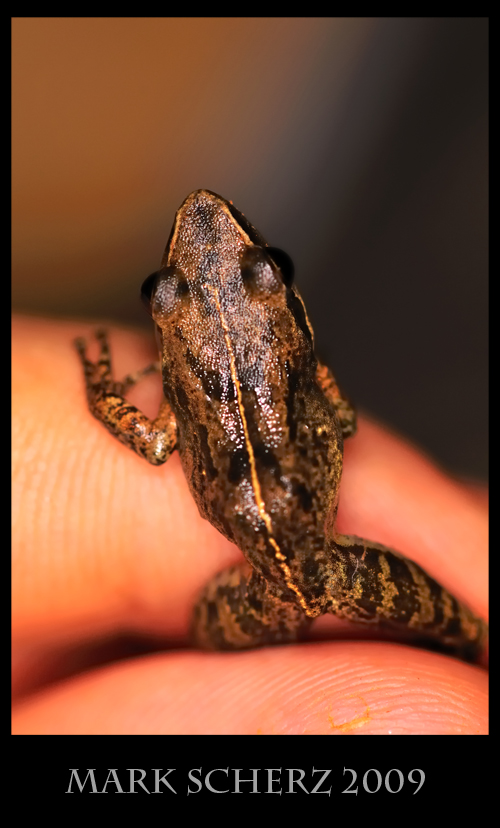
D300 + 105mm VR + R1 Flash Unit @ 1/60s f/8
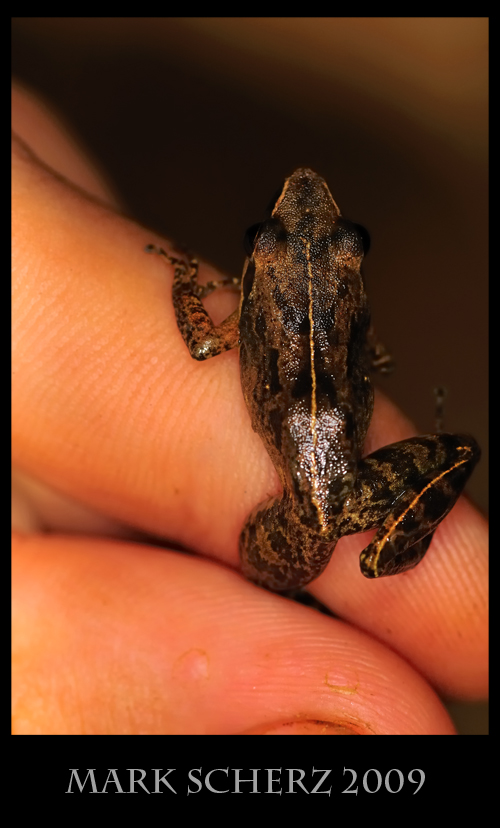
D300 + 105mm VR + R1 Flash Unit @ 1/60s f/11

D300 + 105mm VR + R1 Flash Unit @ 1/60s f/11
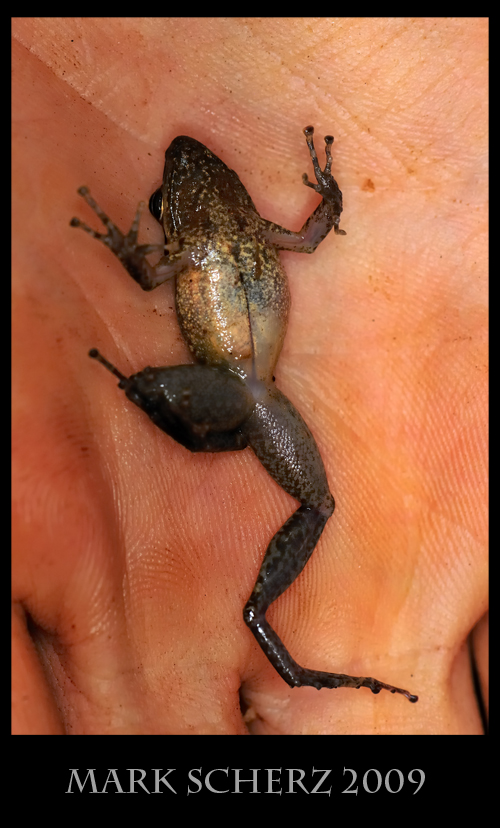
D300 + 105mm VR + R1 Flash Unit @ 1/60s f/11
We set out some bucket traps, and these came back with an unfortunate number of dessicated frogs, but one or two live litter dwellers, including one of the smallest frogs in the world.
Stumpffia gimmeli
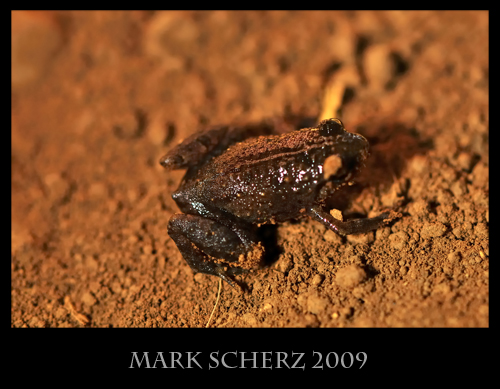
D300 + 105mm VR + R1 Flash Unit @ 1/60s f/8

D300 + 105mm VR + R1 Flash Unit @ 1/60s f/8

D300 + 105mm VR + R1 Flash Unit @ 1/60s f/8

D300 + 105mm VR + R1 Flash Unit @ 1/60s f/11

D300 + 105mm VR + R1 Flash Unit @ 1/60s f/11

D300 + 105mm VR + R1 Flash Unit @ 1/60s f/8
And I think that’s quite enough of him. It’s really tough getting good shots of something quite so small. The last picture is provided for a sense of scale, not quality. The frog is almost a centimetre long.
Boophis septentrionalis – this guy was found at the lagoon. The blue leg is actually only half there. The end of the bone is exposed and the foot is completely missing.

D300 + 105mm VR @ 1/320s f/3.5

D300 + 105mm VR + R1 Flash Unit @ 1/60s f/8

D300 + 105mm VR + R1 Flash Unit @ 1/60s f/8

D300 + 105mm VR + R1 Flash Unit @ 1/60s f/4.5

D300 + 105mm VR + R1 Flash Unit @ 1/60s f/7.1
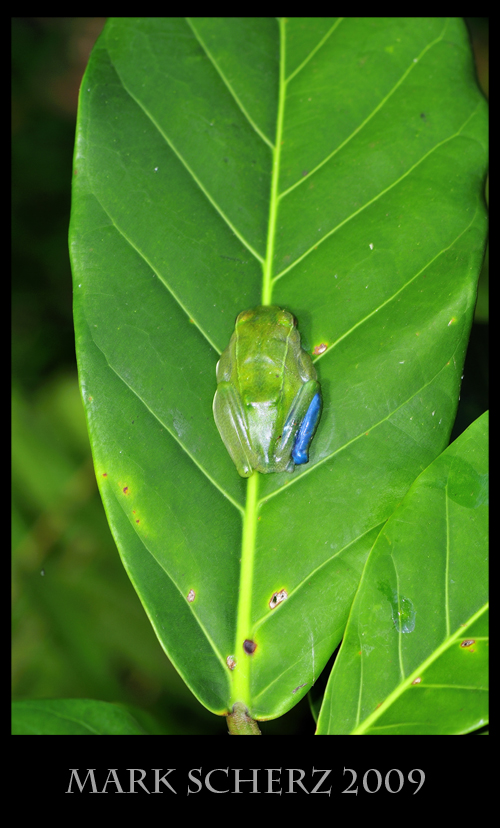
D300 + 105mm VR + R1 Flash Unit @ 1/60s f/7.1
And finally, quite naturally, we found some gorgeous frogs in Montagne d’Ambre. Adorable faces.
Boophis sp.

D300 + 105mm VR + R1 Flash Unit @ 1/60s f/8
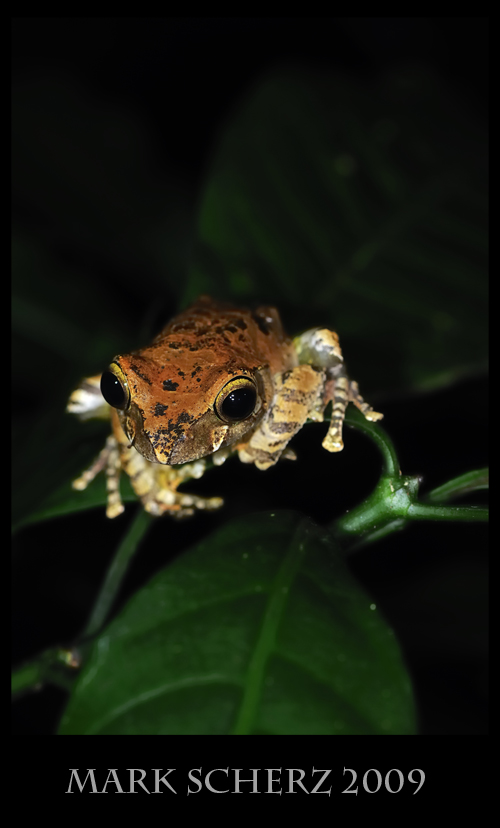
D300 + 105mm VR + R1 Flash Unit @ 1/60s f/8

D300 + 105mm VR + R1 Flash Unit @ 1/60s f/6.3
Boophis sp. – this species, I am almost certain, is not found in Glaw and Vences. It would seem that it may be a new species, and it posed for me beautifully.

D300 + 105mm VR + R1 Flash Unit @ 1/60s f/3
Anyways, I’m afraid that’s it for the frogs. But later this week, I bring you Skinks!
Stay tuned, keep clicking.

